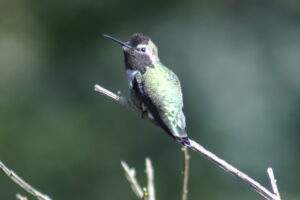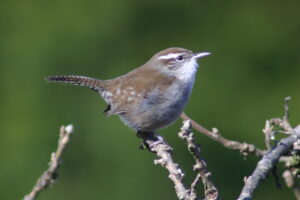Why wouldn’t you want a garden full of birds and their songs? My city garden is alive with birds—not rock pigeons, European starlings and house sparrows, but species native to this region.

Anna’s hummingbirds, golden-crowned sparrows, dark-eyed juncos, bushtits, bewick’s wrens, spotted towhees, American robins, Cooper’s hawks, merlins . . . the list goes on. A savannah sparrow spent a few sheltered days in our garden recuperating after a window strike. The long grass and other plants gave it plenty of shelter from predatory eyes.

Forget grass—go for complexity.
Small trees, bushes and ground cover all make a multilayered environment that is great habitat for a range of birds. Plant flowers for pollinating insects. Leave debris on the ground to provide shelter for other arthropods and prevent rain compaction of the soil.

The more complex the ground cover, the less you may need to water—the soil itself will be shielded from direct sunlight and will keep moist. If you are lucky, toads and salamanders will move in.
Cultivate seed-bearing plants that birds can harvest in addition to plants that you can enjoy, both visually and on the dinner table. In our garden, there is a fair degree of sharing with our avian neighbours. Our thornless blackberries, kale flowers and borage are a hit with the house finches.
Have a look at this video series. Obviously, based on the birds (cardinals—wow!), this is from eastern Canada (Ontario). The closest comparisons I have seen in my garden to the bold colours of a cardinal are a western tanager and northern oriole.

The same garden design principles apply everywhere—complexity, minimum disturbance, a water source(?). Wherever you are in North America, you can have a garden full of birds, colour, song and natural entertainment.


